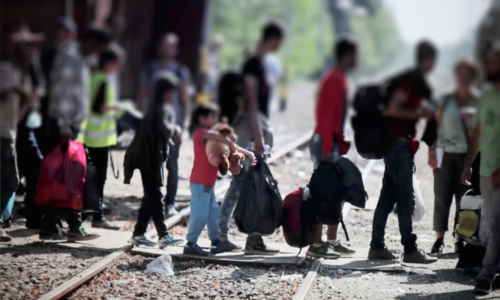In the summer of 1854, U.S. President Franklin Pierce sent Isaac Stevens to be governor of the Washington Territory, a tract of land controlled by the federal government. Gov. Stevens called for a meeting of Native American chiefs to discuss the tension between the U.S. government and the natives.
One of the tribes, the Yakama, was stubbornly rebelling, led by their chief, Kamiakin. The Missionary Oblates of Mary Immaculate (the religious order to which I belong) were working with the Yakama nations. Chief Kamiakin, turned to one of our Oblate priests, Father Charles Pandosy, for advice, asking him how many Europeans there were and when they would stop coming.
Sadly, the advice that Father Pandosy gave him was of no consolation to the chief. In a letter to our Oblate founder in France, St. Eugène de Mazenod, Father Pandosy summed up his conversation with the Yakama chief.
He told Chief Kamiakin: “It is as I feared. The whites will take your country as they have taken other countries from the Indians. I came from the land of the white man far to the east where the people are thicker than the grass on the hills. Where there are only a few here now, others will come with each year until your country will be overrun with them. …
“It has been so with other tribes; it will be so with you. You may fight and delay for a time this invasion, but you cannot avert it. I have lived many summers with you and baptized a great number of your people into the faith. I have learned to love you. I cannot advise you or help you. I wish I could.” (Quote from Kay Cronin, “Cross in the Wilderness,” Mission Press, Toronto, c. 1960, p. 35.)
One-hundred and seventy years later the situation is the same, only the players are different. In 1854, Europeans were coming to America for a myriad of reasons. Some were fleeing poverty, others persecution, others saw no future for themselves in their homeland, others were searching for religious freedom, and others were immigrating because they saw huge possibilities here in terms of career and fortune.
But, this was the problem. There were people already living here and these indigenous peoples resisted and resented the newcomers, perceiving their coming as a threat, an unfairness, and a seizure of their country. Even before they fully realized how many people would land on their shores, the indigenous nations had already intuited what this would mean: the end to their way of life.
Does any of this sound strangely familiar? I recall a comment I read on the sports pages several years ago that spoke volumes. A baseball player in New York City to play the Yankees shared how, going to the stadium on the subway, he was taken aback by what he saw and heard: “There were people of different colors, speaking different languages, and I asked myself, who let all these people into our country?”
That could have been Chief Kamiakin of the Yakama nation, 170 years ago. Today our borders everywhere are crowded with people trying to enter our Western countries, and they are fleeing their homelands for the same reasons as did the original Europeans who came to America.
Most of them are fleeing persecution or a hopeless future for themselves in their own countries, even as others are seeking a better career and fortune for themselves. And, like the indigenous peoples, we who now live here have the same concerns that Chief Kamiakin had 170 years ago: When will this stop? How many of those people are there? What will this mean for our way of life, for our ethnicity, our language, our culture, our religion?
Whatever our personal feelings about this, the answer to those questions cannot be much different from the answer Father Pandosy gave Chief Kamiakin all those years ago. It’s not going to stop, because it can’t. Why not?
Globalization is inevitable because the earth is round, not endless. Sooner or later, we have no other option but to meet one another, accept one another, and find a way to share space and life with one another. Because the earth is round, its space and resources are limited, not endless.
Moreover, there are millions of people who are unable to live where they are presently living. They will do what they have to for themselves and their families. What’s happening cannot be stopped. In the words of Father Pandosy, “We may try to fight and delay this invasion for a time, but we cannot avert it.”
Today, we, former immigrants ourselves, are beginning (at least a little) to understand what the indigenous peoples must have felt when we showed up, uninvited, on their shores. It’s our turn now to know what it feels like when a country we consider as ours is progressively filling up with people who are different from us in ethnicity, language, culture, religion, and way of life.
What goes around comes around.

